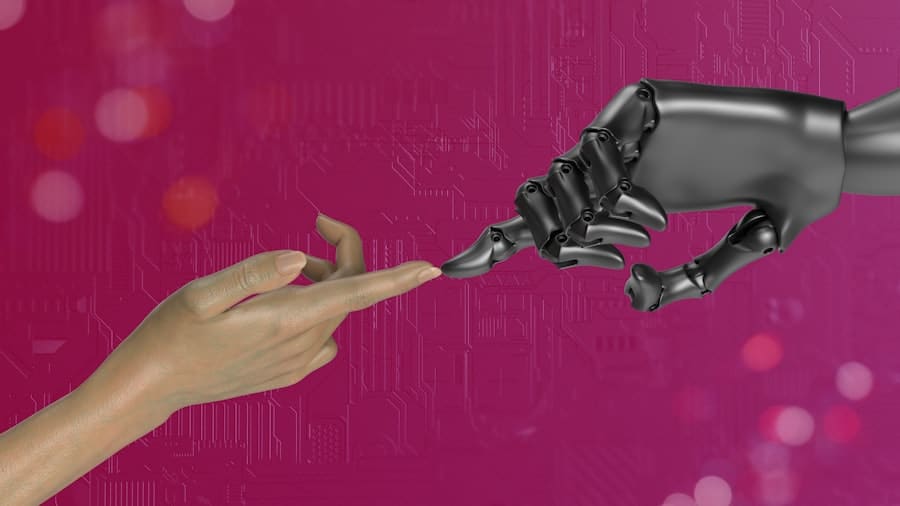In an era where cyber threats are becoming increasingly sophisticated, the traditional methods of cybersecurity are often inadequate to combat the evolving landscape of digital risks. Security Operations Centers (SOCs) have emerged as critical components in the defense against these threats, serving as centralized units that monitor, detect, and respond to security incidents. The integration of Artificial Intelligence (AI) into SOCs has revolutionized the way organizations approach cybersecurity, enabling them to leverage advanced technologies to enhance their security posture.
AI-driven SOCs utilize machine learning algorithms, data analytics, and automation to streamline operations, improve threat detection capabilities, and reduce response times. The adoption of AI in SOCs is not merely a trend; it represents a fundamental shift in how organizations manage their cybersecurity efforts. By harnessing the power of AI, SOCs can analyze vast amounts of data in real-time, identify patterns indicative of potential threats, and automate routine tasks that would otherwise consume valuable human resources.
This transformation allows security analysts to focus on more complex issues that require human intuition and expertise. As cyber threats continue to evolve, the role of AI in SOCs will only become more critical, shaping the future of cybersecurity operations.
Key Takeaways
- AI-driven Security Operations Centers (SOCs) are revolutionizing the way organizations detect and respond to security threats.
- The evolution of AI in security operations has led to more efficient and effective threat detection and response capabilities.
- AI plays a crucial role in threat detection and response by analyzing vast amounts of data to identify patterns and anomalies indicative of potential security threats.
- Advancements in AI-driven security analytics have enabled organizations to proactively identify and mitigate security risks before they escalate into full-blown incidents.
- The integration of AI and human analysts in SOCs is essential for maximizing the effectiveness of security operations, combining the strengths of both AI and human intelligence.
The Evolution of AI in Security Operations
From Detection to Prediction
Over time, as the volume and complexity of cyber threats increased, organizations recognized the need for more sophisticated solutions. This led to the development of AI algorithms capable of not only detecting threats but also predicting them based on historical data and behavioral patterns.
The Power of Supervised and Unsupervised Learning
One significant milestone in this evolution was the introduction of supervised and unsupervised learning techniques.
In contrast, unsupervised learning enables algorithms to identify patterns and anomalies without prior labeling.
Enhanced Threat Detection Capabilities
This dual approach has empowered SOCs to enhance their threat detection capabilities significantly. For instance, unsupervised learning can uncover previously unknown attack vectors by analyzing user behavior and identifying deviations from established norms.
The Role of AI in Threat Detection and Response
AI plays a pivotal role in enhancing threat detection and response within SOCs by automating the analysis of security events and incidents. Traditional methods often rely on rule-based systems that can be slow to adapt to new threats. In contrast, AI-driven systems utilize machine learning models that continuously learn from new data, allowing them to identify emerging threats more effectively.
For example, an AI system can analyze millions of logs from various sources in real-time, flagging suspicious activities that may indicate a breach or an attempted attack. Moreover, AI enhances incident response by providing actionable insights that help analysts prioritize their efforts. When a potential threat is detected, AI systems can assess the severity of the incident based on various factors such as the type of attack, the assets involved, and historical data related to similar incidents.
This prioritization enables security teams to focus on high-risk threats first, ensuring that resources are allocated efficiently. Additionally, AI can automate certain response actions, such as isolating affected systems or blocking malicious IP addresses, thereby reducing the time it takes to mitigate threats.
Advancements in AI-Driven Security Analytics
The field of security analytics has witnessed remarkable advancements due to the integration of AI technologies. Modern AI-driven analytics platforms are capable of processing vast amounts of structured and unstructured data from diverse sources, including network traffic, endpoint logs, and threat intelligence feeds. This capability allows organizations to gain a comprehensive view of their security landscape and identify potential vulnerabilities before they can be exploited.
One notable advancement is the use of natural language processing (NLP) in security analytics.
By extracting relevant information from these sources, AI systems can provide context around emerging threats and help analysts make informed decisions.
For instance, if a new vulnerability is reported in a widely used software application, an AI-driven analytics platform can quickly assess whether an organization is using that application and recommend appropriate remediation steps.
The Integration of AI and Human Analysts in SOCs
While AI has proven to be a powerful tool in enhancing cybersecurity operations, it is essential to recognize that it does not replace human analysts; rather, it complements their expertise. The integration of AI into SOCs creates a symbiotic relationship where machines handle repetitive tasks and data analysis while humans focus on strategic decision-making and complex problem-solving. This collaboration allows organizations to maximize their resources and improve overall efficiency.
Human analysts bring critical thinking skills and contextual understanding that AI systems currently lack. For example, while an AI may identify a potential threat based on statistical anomalies, it may not fully grasp the broader implications or motivations behind an attack. Human analysts can provide insights based on their experience and knowledge of the organization’s specific environment.
Furthermore, they can interpret the results generated by AI systems and make nuanced decisions regarding incident response strategies.
The Impact of AI on Incident Response and Remediation
Streamlined Incident Response
AI-driven tools can automatically categorize incidents based on severity levels and suggest appropriate remediation actions based on historical data and best practices.
Enhanced Post-Incident Analysis
AI can facilitate post-incident analysis by identifying root causes and recommending preventive measures for future incidents. After a breach occurs, an AI system can analyze logs and other relevant data to determine how the attack was executed and what vulnerabilities were exploited. This information is invaluable for strengthening defenses against similar attacks in the future.
Improved Predictive Capabilities
Moreover, by continuously learning from past incidents, AI systems can improve their predictive capabilities over time, further enhancing an organization’s resilience against cyber threats.
Challenges and Considerations for AI-Driven SOCs
Despite the numerous benefits associated with AI-driven SOCs, several challenges must be addressed for successful implementation. One significant concern is the potential for false positives generated by AI systems. While machine learning algorithms are designed to minimize errors over time, they are not infallible.
A high rate of false positives can overwhelm security teams and lead to alert fatigue, where analysts become desensitized to alerts due to their frequency. Another challenge lies in the ethical considerations surrounding AI in cybersecurity. As organizations increasingly rely on automated systems for decision-making, questions arise regarding accountability and transparency.
For instance, if an AI system incorrectly identifies a legitimate user as a threat and triggers a response that disrupts business operations, who is responsible for that decision? Establishing clear guidelines for accountability and ensuring transparency in AI decision-making processes are crucial for maintaining trust among stakeholders.
The Future of AI-Driven SOCs: Opportunities and Potential Developments
Looking ahead, the future of AI-driven SOCs is filled with opportunities for innovation and growth. As technology continues to advance, we can expect further enhancements in machine learning algorithms that will improve threat detection accuracy and response times. The integration of advanced technologies such as quantum computing may also revolutionize cybersecurity by enabling faster processing of complex datasets.
Moreover, as cyber threats become more sophisticated, there will be an increasing demand for collaborative approaches that combine human expertise with AI capabilities. Organizations may explore hybrid models where human analysts work alongside advanced AI systems to create a more robust defense against cyber threats. This collaboration could lead to the development of new methodologies for threat hunting and incident response that leverage both human intuition and machine efficiency.
In conclusion, the evolution of AI-driven Security Operations Centers represents a significant advancement in the field of cybersecurity. By harnessing the power of artificial intelligence, organizations can enhance their threat detection capabilities, streamline incident response processes, and ultimately create a more resilient security posture against an ever-evolving landscape of cyber threats. As we move forward into this new era of cybersecurity operations, it will be essential for organizations to navigate the challenges associated with AI while embracing its potential to transform how we protect our digital assets.
In a recent article on enicomp.com, the discussion around the future of AI-driven Security Operations Centers (SOCs) is explored in depth. The article delves into how AI technology is revolutionizing the way security teams detect and respond to threats in real-time. For more information on cutting-edge technology, check out their comprehensive guide on the best software for NDIS providers here.
FAQs
What is an AI-driven Security Operations Center (SOC)?
An AI-driven Security Operations Center (SOC) is a centralized unit that deals with security issues on an organizational and technical level. It uses artificial intelligence and machine learning to automate and enhance security operations.
How does AI enhance Security Operations Centers (SOCs)?
AI enhances Security Operations Centers (SOCs) by automating repetitive tasks, analyzing large volumes of data to identify patterns and anomalies, and providing real-time threat detection and response capabilities.
What are the benefits of AI-driven Security Operations Centers (SOCs)?
The benefits of AI-driven Security Operations Centers (SOCs) include improved threat detection and response times, reduced manual workload for security analysts, enhanced accuracy in identifying security incidents, and the ability to handle large volumes of data efficiently.
What are the potential challenges of implementing AI-driven Security Operations Centers (SOCs)?
Potential challenges of implementing AI-driven Security Operations Centers (SOCs) include the need for skilled personnel to manage and interpret AI-generated insights, the risk of false positives or false negatives in threat detection, and the potential for AI bias in decision-making processes.
How is AI expected to impact the future of Security Operations Centers (SOCs)?
AI is expected to revolutionize the future of Security Operations Centers (SOCs) by enabling proactive threat hunting, predictive analytics for identifying emerging threats, and the ability to adapt and respond to evolving cybersecurity challenges in real time.



